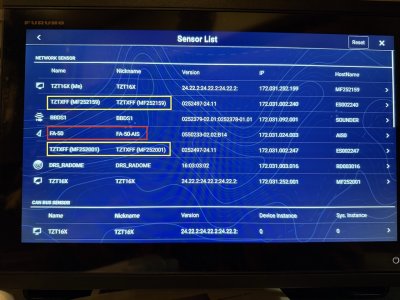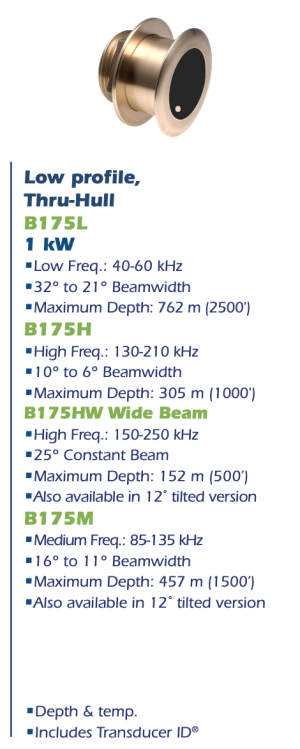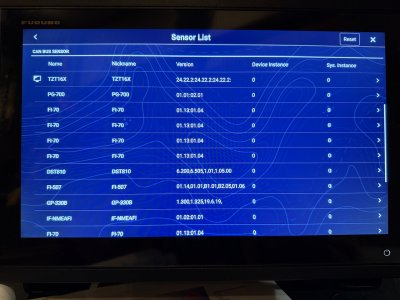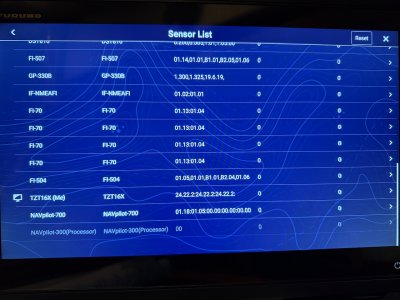Not sure what the machine is telling me. I noticed "DST200" was the "Current" data source for heading, drift, attitude, rate of turn, rudder, atmospheric pressure, air temperature, TWA/TWD/TWS, AWA/AWS... and I can't see how that makes any sense at all. The "Prefered" source for all those is "LAN" -- which makes slightly more sense.
The DST200 is actually an Airmar DST800 and had been part of the existing (at at least working) Garmin network present when we bought the boat. On the Garmin net, I changed date source to the only other offered option -- GPSMAP 7612xsv -- and that in turn changed all the "Current" values on the TZT16F network to GPSMap 7612xsv -- instead of DST200.
Still makes no sense; I'd have expected the "Current" value to match the "Prefered" value. And there isn't any value on the Garmin side of the net that I want for a source to the TZT16F.
Hesitant to try a "Reset" -- not sure what to expect...
???
-Chris
The DST200 is actually an Airmar DST800 and had been part of the existing (at at least working) Garmin network present when we bought the boat. On the Garmin net, I changed date source to the only other offered option -- GPSMAP 7612xsv -- and that in turn changed all the "Current" values on the TZT16F network to GPSMap 7612xsv -- instead of DST200.
Still makes no sense; I'd have expected the "Current" value to match the "Prefered" value. And there isn't any value on the Garmin side of the net that I want for a source to the TZT16F.
Hesitant to try a "Reset" -- not sure what to expect...
???
-Chris







